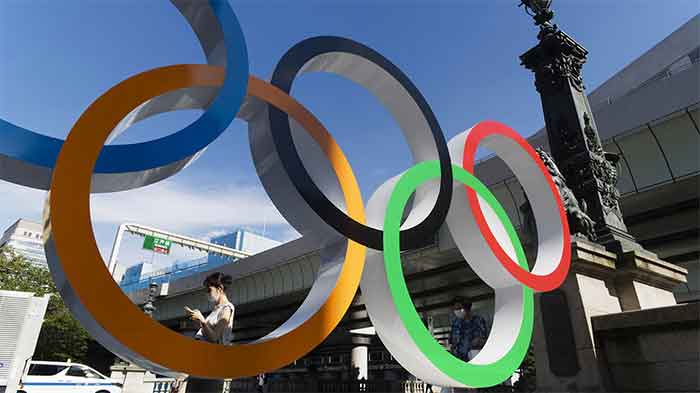
“The gap between rhetoric and reality is a persistent one when looking at the sustainability of commitments of Olympic Games hosts”.
Martin Müller, European Urban and Regional Studies, 2015
The organisers of the Olympics have always been into appearances and grand theatre. And the International Olympic Committee has always been keen in keeping them up, from the barely credible notion of political neutrality to the now popular goal of carbon neutrality. In 2015, the IOC decided to fully hop on the sustainability bandwagon, though it claimed to have been “an important topic for the IOC for many years”. Indeed, in the 1990s, the body echoed the sentiments of the UN’s sustainable development plan Agenda 21 by publishing Olympic Movement’s Agenda 21, though that report displays, rather prominently, the company logo of the oil behemoth Shell. Sustainable development was, according to the then IOC chief Juan Antonio Samaranch, “totally in conformity with the goal of Olympism, which is to place everywhere sport at the service of the harmonious development of man.”
In its Olympic Agenda 2020, the IOC sets out recommendations for three “spheres of responsibility”. The first: that the IOC adopt sustainability principles and include them “in its day-to-day operations.” The second: that the organisation “take a proactive and leadership role on sustainability and ensure that it is included in all aspects of the planning and staging” of the games. The third, as being the “leader of the Olympic Movement”, the IOC will engage and assist the movement’s “stakeholders in integrating sustainability within their own organisations and operations.”
As with other organisations of scale, problematic strategies such as carbon offsetting are embraced. Much is made of making sure that such “efforts” are communicated both internally “via workshops or by circulating infographics” and externally. Get the public interested, let them visit “a dedicated webpage, creating interactive tools or apps (carbon footprinter)” or have “non-site activities at Games-time to raise public awareness.”
In its Carbon Footprint Methodology for the Olympic Games, the IOC extols the “golden rules” of “transparency and honesty” in communicating sustainability efforts “to avoid any risks of greenwashing or overstatement.” With a propagandist’s care, attention is given to separating functions lest misunderstanding emerge. Emissions arising from preparations and operations are to be distinguished from permanent infrastructure emissions and those arising from “associated activities”. “A clear explanation must be given for any excluded categories.”
The quest for acquiring a sufficient number of carbon credits for the Tokyo games has been advertised, or communicated, as a success. A member of the Tokyo Olympics sustainability committee, Masako Konishi, tells us that “more than enough carbon credits, more than 150 per cent of what was needed”, has been obtained. “These carbon credits follow robust guidelines, which I think could be a role model for future Olympics.”
Such credits do nothing to remove existing emissions in the way that soil carbon sequestration or direct air capture does, giving an accountant’s version of carbon neutrality. But they give the IOC a chance to boast about carbon offsetting practices with Dow, which has been in a “carbon partnership” with the organisation since 2017. In doing so, the committee holds on to a tradition that fails to address the harm caused by mega events, infrastructure projects and large numbers of spectators while promoting the credentials of environmental citizenship.
Specifically to Tokyo, the 2020 Olympic and Paralympic games are advertised as “the most innovative in history” garlanded with meaningless platitudes such as “Achieving Personal Best”, “Unity in Diversity”, and “Connecting to Tomorrow”. The Tokyo Organising Committee emphasises four sustainable development principles with the enthusiasm of a university manager (stewardship, inclusivity, integrity and transparency – all in capitals, of course), “harmonized with the Games vision, while embracing the sustainability concept of the Games: ‘Be better, together – For the planet and for the people.’”
Sustainability box ticking involves decarbonisation with renewable energy and “maximum energy savings”; “zero wasting” with the Tokyo Games “aiming to suppress deforestation and land devastation caused by resource exploitation”; restoring biodiversity and creating “a rich ecological network” and “new urban system that will improve comfort and resilience”.
The opening ceremony was also signatured with tokens of greenish sustainability. The white T-shirts and trousers worn by the torchbearers of the Olympic flame used recycled plastic bottles gathered by Coca-Cola. The hydrogen-fuelled torch, by Japanese designer Tokujin Yoshioka, was the product of construction waste from temporary housing used for victims of the Great East Japan earthquake and tsunami in 2011.
Athletes will also bear witness to the IOC sustainability doctrine. Japanese bedding company Airweave has created 18,000 beds using recycled cardboard, 8000 of which will be repurposed for the Paralympics. Winners can know that the 5000 medals for the games are made from metal extracted from donated mobile phones and other electronic devices. The 3D-printed podiums upon which such medals will be received are sourced from 24.5 tonnes of discarded household plastics.
Behind such an extensive show of environmental soundness is an uglier truth. In an April study in Nature Sustainability, the authors evaluated the sustainability credentials of 16 Olympic Games, both summer and winter versions, between 1992 and 2020. The model used by the researchers found that sustainability had never been the event’s strong suit and had actually decreased over time. Salt Lake City 2002 was the best; Sochi 2014 and Rio de Janeiro 2016, the worst.
The study suggests three actions in the short term to improve the poor score card, all of which make environmentally good sense but would scandalize IOC officialdom. Future events should be reduced in size, meaning that fewer resources would need to be consumed. (It also followed that the revenue base would also shrink.) “It will diminish the carbon emissions by visitors and bring down the ecological and material footprint by reducing the size and cost of the new infrastructure required.” Sports content of the immersive type could be provided in digital form.
The games could also be rotated among the same cities. There would be no need to build more infrastructure, as it would already be in place, minimising cost and social and ecological disruption. Finally, to achieve this would require an independent body “to develop, monitor and enforce credible sustainability standards” and would overcome the problem of having individual cities hosting the games to dedicate their own sustainability goals.
David Gogishvili, one of the co-authors of the study, was politely scathing of the IOC. “The efforts the International Olympic Committee is making are important but they are limited and not enough. From my perspective, unless they heavily limit the construction aspect and the overall size of the event, they will always be criticised for greenwashing.” Those IOC communicators will be working around the clock.
Dr. Binoy Kampmark was a Commonwealth Scholar at Selwyn College, Cambridge. He lectures at RMIT University, Melbourne. Email: [email protected]












































